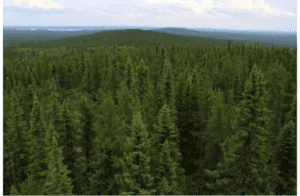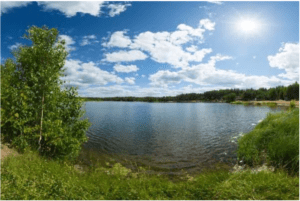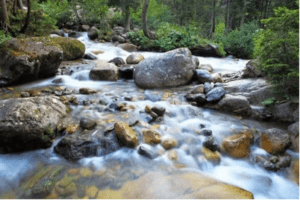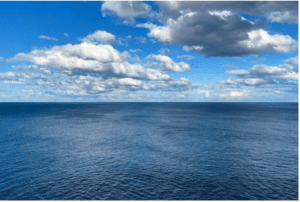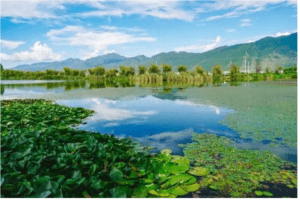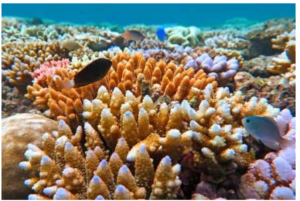Hello, Welcome to Haimi World, Friends, In this blog I will tell you about 8 Types of Natural Environments. Our natural environment refers to the ecosystems and habitats that exist on Earth, including forests, oceans, rivers, and mountains, as well as the animals, plants, and microorganisms that live within them. These natural systems play a vital role in sustaining life on Earth, providing clean air and water, fertile soil for agriculture, and a wealth of natural resources. Here are the 8 Types of Natural Environments.
However, our natural environment is facing many challenges due to human activities such as deforestation, pollution, and climate change. These activities have led to the loss of biodiversity, habitat destruction, and the degradation of our natural systems, which can have severe consequences for human health and well-being. These are the 8 Types of Natural Environments.
Following are the 8 Types of Natural Environments
1.TEMPERATE FORESTS-
Temperate forests experience four distinct climate seasons–winter, spring, fall, and summer. They consist of oaks, maples, and other deciduous trees as well as seasonal plants.
2.TROPICAL FORESTS-
Characterized by nearly daily rain showers, high humidity, and temperatures averaging between 90 and 100 degrees Fahrenheit, tropical forests are found in the equatorial regions of Africa, Australia, southern Asia, and South America.
3.BOREAL FORESTS-
Found in the northernmost regions of Europe, Asia, and North America, boreal forests consist mostly of white spruces, jackpines, white birches, and trembling aspens.
4.LAKES AND PONDS-
A diverse community of animals lives in the shallow waters near the shores of large ponds and lakes where more sunlight can be absorbed and retained. Called the littoral zone, these shallow areas harbor creatures ranging from microscopic diatoms.
5.STREAMS AND RIVERS-
Stream and river animals like river otters or eels have long, slender bodies that help them swim in fast-moving water. Crabs have evolved strong pincers they use to hold onto plant leaves when water is flowing forcefully.
6.OCEANS AND SEAS-
Nearly three-quarters of the Earth’s surface is covered by oceans and seas. The Pacific Ocean is the largest ocean on the planet and provides about 30 percent of the oxygen animals and humans breathe. Seas are much smaller than the Atlantic.
7.WETLANDS-
Areas where various amounts of water cover the ground all year, or at least during the growing season, are called wetlands. The percentage of soil saturation is the primary factor that determines what kind of animals and plants live in wetlands.
8.CORAL REEFS-
The most famous coral reef, the Great Barrier Reef of Australia, is an ancient natural environment existing in both shallow and deep ocean waters. Often referred to as the “rainforests of the oceans”, coral reefs are considered to be the planet’s most fertile ecosystem.
To protect our natural environment, it is essential that we take steps to reduce our impact on the planet, such as reducing our carbon emissions, conserving energy and water, and promoting sustainable practices in agriculture and forestry. We must also work to protect our endangered species and ecosystems through conservation efforts and the establishment of protected areas.
Conclusion:
In conclusion, our natural environment is a vital part of our planet, providing us with essential resources and supporting all life on Earth. However, it is under threat due to human activities, and we must take steps to reduce our impact and protect our ecosystems and endangered species. By promoting sustainable practices and conservation efforts, we can help to ensure that our natural environment remains healthy and thriving for generations to come. It is our responsibility to be good stewards of the Earth, and to work together to create a sustainable and healthy future for ourselves and all living beings. So these are the 8 Types of Natural Environments.
FAQ
Q: Why is it important to protect our natural environment?
A: Protecting our natural environment is important because it provides us with essential resources such as clean air and water, fertile soil for agriculture, and natural resources for our industries. It also supports biodiversity and ecological systems that are crucial for our survival and well-being.
Q: What are some human activities that harm the natural environment?
A: Human activities that harm the natural environment include deforestation, pollution, overfishing, habitat destruction, and climate change. These activities can cause the loss of biodiversity, habitat destruction, and the degradation of natural systems.
Q: What is biodiversity?
A: Biodiversity refers to the variety of living organisms in a given area, including animals, plants, and microorganisms. It is important because it supports ecological systems, provides essential resources, and contributes to human well-being.
Q: What can we do to protect the natural environment?
A: We can protect the natural environment by reducing our carbon footprint, conserving energy and water, promoting sustainable practices in agriculture and forestry, and supporting conservation efforts and the establishment of protected areas.
Q: What are some benefits of protecting the natural environment?
A: Benefits of protecting the natural environment include clean air and water, healthy ecosystems, sustainable resources, and improved human health and well-being. It also supports ecotourism and provides recreational opportunities for people to enjoy nature.




